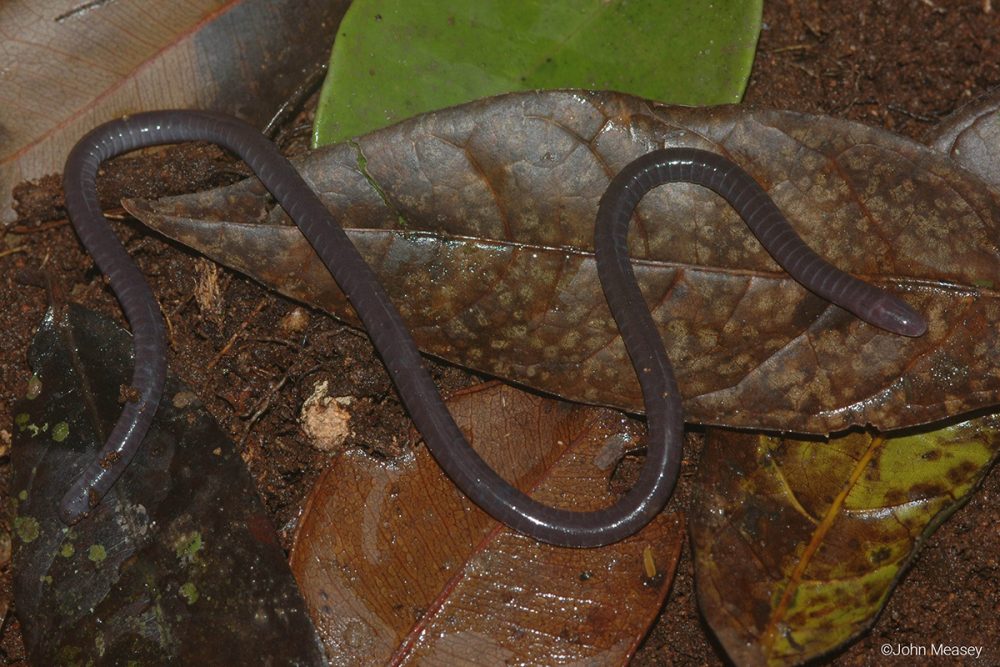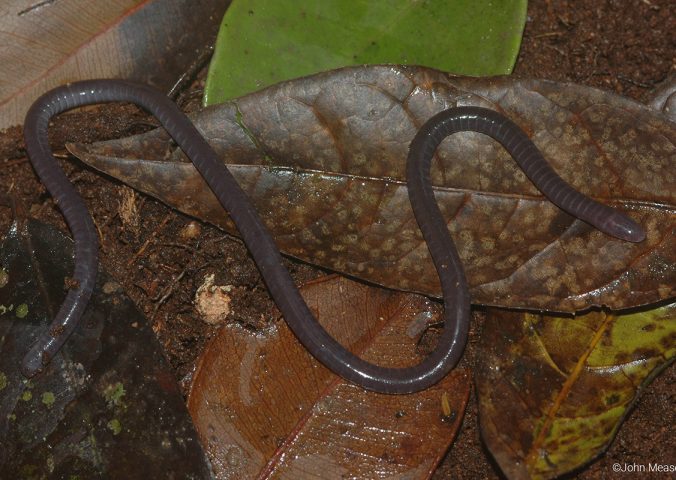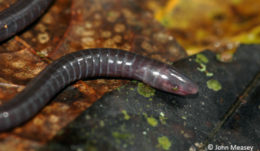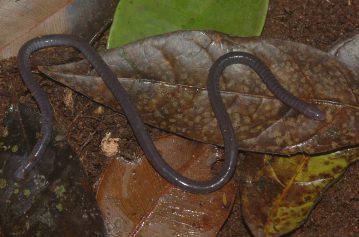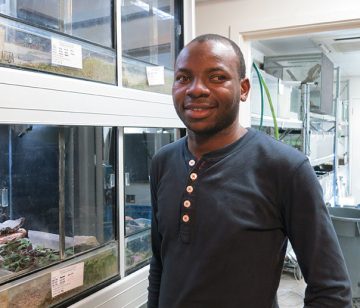About
The Endangered Sagalla caecilian is found on Sagalla Hill, Kenya, with a total range which is equivalent to the area half the size of Manhattan Island.
This worm-like burrowing species is actually an egg-laying amphibian, and these eggs guarded by the female until they hatch. The Sagalla caecilian uses specialised sensory tentacles on either side of its head to feel its way around as it feeds on earth worms and termites. This species detects its prey by detecting chemical signals through an acute sense of smell and taste.
Modern caecilians, with their limbless, superficially worm-like or snake-like bodies, are perhaps the most unusual amphibians in appearance, and their behaviour can be equally strange. The order Gymnophiona (the caecilians) diverged from other amphibian lineages more than 300 million years ago, in the Carboniferous period. This is around the same time humans last shared a common ancestor with turtles, snakes, and even dinosaurs!
The Sagalla caecilian is under threat from the clearance of native vegetation and the subsequent soil erosion of its habitat. There are also Eucalyptus plantations on Sagalla Hill, and this is suggested to create an unfavourable habitat for the Sagalla caecilian. Sagalla forest is now a government managed community forest. The Kenyan forest service are replacing eucalyptus in private farms with indigenous trees in the area to create better more favourable for this species.
- Order: Gymnophiona
- Family: Herpelidae
- Population: Locally common
- Trend: unknown
- Size: 300mm
EDGE Score
Distribution
This species found between 1,000-1504 metres above sea level on Sagala Hill, in the Taita Hills, southeastern Kenya.
Habitat and Ecology
This species lives in soil underneath banana plants or under decomposing organic debris. They are tolerant of small-scale farming activities. Their density is higher near streams than in cultivated land away from streams. This species is presumed to breed by direct development; whereby young emerge from the eggs as miniature versions of the adults and bypass a free living larval stage.
